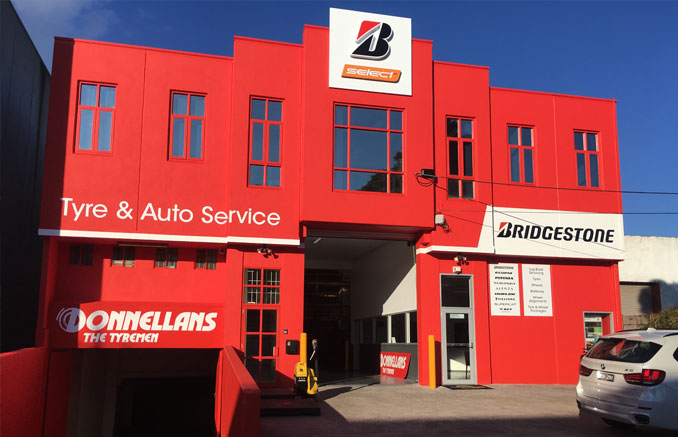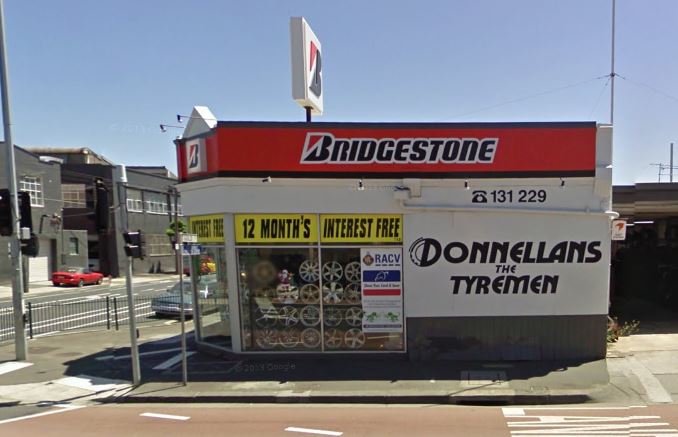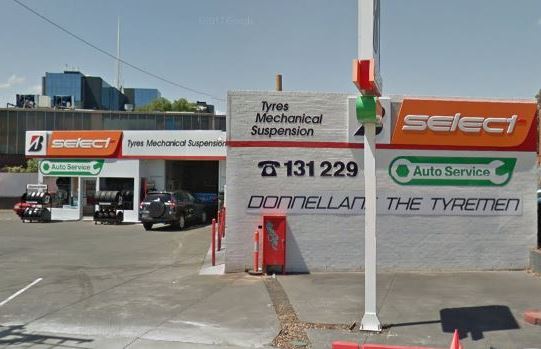Back to Latest News
Why do tyres come in different sizes?

Tyres are all black and round. So how come the tyre shop says you need a specific set?
The fact is: tyres come in many different sizes, tread designs and construction types. Putting the wrong type on your vehicle can cause issues ranging from speedometer errors to poor performance, fuel economy figures, or even insurance that will fail to pay out in the event of an accident.
If you’ve ever wanted to know more about why tyres come in different sizes and how to tell what size you need, read on! Donnellans can teach you how to know more about your tyres.

Metric Tyre Sizing
Metric tyres are the most common tyres you’ll see on the road, and the tyre is typically labelled with a series of 3 numbers with some lettering thrown in.
You might see a number similar to P235/65 R16 on the sidewall of your tyre. Let's break down what each number means and how it affects the size of the tyre.
Width
The ‘235’ in the above tyre size is for the width of the tyre. This is the nominal section width, as opposed to tangible tread width, as the actual width of the tread area depends on shoulder design, some tyres have rugged, squared off shoulders, while others have gently rounded shoulders. Total overall width of a tyre can also depend on the width of the wheel it is fitted to.
Aspect Ratio
65 in the above example is for ‘aspect ratio’. In this case, the sidewall height of the tyre is 65% as large as the nominal width. Higher aspect ratios have larger sidewalls, and are generally more comfortable. A so-called ‘low profile’ tyre can sometimes have aspect ratios of between 35-50.
Tyre Construction Type
The ‘R’ isn’t for ‘radius’ or anything like that, it stands for ‘Radial’ and it is a reference to how the internal reinforcement belts inside the tyre are laid out. Radial tyres are the de-facto standard for just about all modern road tyres, though you may see ‘B’ for Bias Ply occasionally. Usually, bias tyres are only found on specialist equipment and some purpose built drag racing vehicles.
Diameter
16 in the tyre size listed above is for the diameter of the wheel the tyre is designed to be fitted to. In this case, a 16 inch wheel. Tyres must be fitted to the correct size wheel in order to seal properly and contain air.
If you’ve got this far and realised we didn’t explain what the ‘P’ means, it stands for Passenger. The ‘P’ designation refers to the internal construction of the tyre. Passenger tyres are designed to be fitted to cars, 4WD, SUVs and smaller commercial vehicles that don’t require higher load ratings.
In a similar vein to P construction tyres, there are also LT construction tyres. LT stands for Light Truck. Externally, these tyres look the same as P tyres, however they have more internal reinforcements, and are capable of supporting heavier loads, often at the tradeoff of fuel economy, weight, and noise.
High-Flotation and Truck Tyre Sizing
Many tyres for larger vehicles and light trucks use a different labelling system. ‘Light Truck’ here is a bit of a carry-over from how vehicles used to be named. These days, ‘light truck’ tyres typically refers to tyre construction, rather than a description of what vehicles they’re designed to be used on.
The ‘flotation’ moniker is named after the fact that many of these tyres are designed to spread a vehicle’s weight over a larger area, and are useful for traversing softer ground.
A typical light truck tyre might be labelled something similar to: 31x12.5 R16
Diameter
Typically for vehicles that require these tyres, the absolute total diameter is more important to know than the width. In this example, the tyre is roughly 31 inches in diameter.
Some LT tyres have sizing that doesn’t specify the diameter, and you’ll end up with a tyre sidewall that states something like 7.5 R 16 LT. In this case, the diameter is always a fixed number and there are no alternative diameters available.
Width
In much the same way that metric tyres list nominal cross section width, so too, do flotation tyres. This is neither a measurement of the width of the tread face, nor the intended wheel width, but rather it’s the width of the tyre, sidewalls and all, when fitted to the appropriate width wheel.
Wheel size
Tyres must be fitted to the exact right size wheel, which is why the correct wheel size for the tyre is prominently listed. In this case, the example tyre is meant for a 16 inch wheel.
Construction
Once again, the letter R stands for radial. This refers to the internal layout of the reinforcement belts and plies within the tyre.
Other labelling schemes
Aside from standard Metric and Flotation tyre sizing, you might see tyres listed as something like 11 R 22.5. This naming system only includes the width and wheel size. When the aspect ratio isn’t listed, they’re either an 80 or 85 profile.
Other Sidewall Information
Aside from sidewall information relating to the size of the tyres, there are two important bits of information relating to tyre performance. These are the load index and speed rating.
Load Index
After the size information, many tyres have a number made from 2 or 3 digits that relate to the load rating. This digit can be read using a chart that can easily be found in another article about sidewall information here.
Some tyres will have multiple load ratings listed, which is used when there are multiple tyres per axle, per side. The lower rating is for when tyres are doubled up. This sounds counterintuitive, but using the following example:
A truck with single rear wheels (a pair of tyres) each with a load rating of 146 which equates to 3000kg per tyre, rotating a maximum of 6000kg on the rear axle.
A similar truck with dual rear tyres (4 tyres per axle) and the same tyres, only have a load rating of 143 when used in a dual setup. A 143 load rating equates to 2725kg per tyre, but, this axle having 4 tyres, can support 10,900kgs (ignoring other vehicle specifications).
The slightly lower rating accounts for crowning in the road resulting in uneven distribution of weight across all four tyres, as well as a safety net in the event that one tyre is damaged, low on air, or blown.
Speed Rating
Similarly to load, different tyres are rated at different speeds. The speed rating of a tyre is signified by a single letter, or in some cases a pair of letters.
Tyres gain certain speed ratings by being engineered to dissipate heat while being driven on at speed. Lower speed rated tyres typically have heavier weight carrying capacity, but the thicker construction leads to extra heat build up. Too much heat is the enemy of tyres, and many sudden blowouts have been caused by tyres overheating.
Controlling tyre temperatures can be done by:
- Not overloading a tyre
- Ensuring the tyre is inflated to the correct pressure
- If a lower pressure is required, limiting maximum speed
You can read about what letters relate to what maximum speeds by following this link.
Donnellans The Tyremen
With 4 convenient locations, come and see the team at Donnellans today!
Blackburn
Collingwood
Preston
Balwyn







